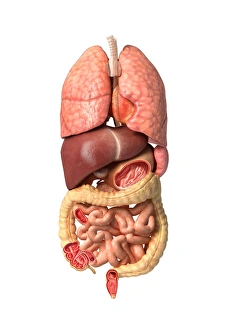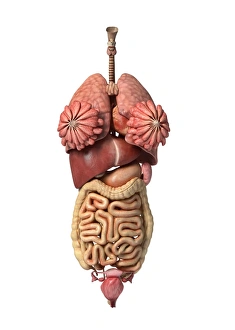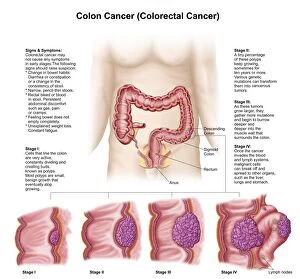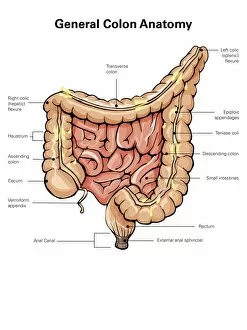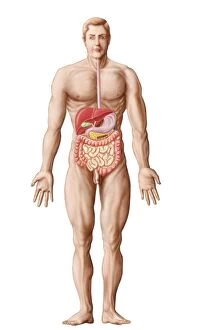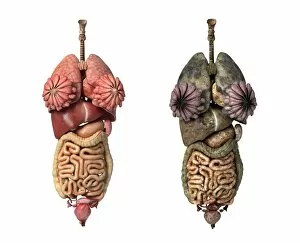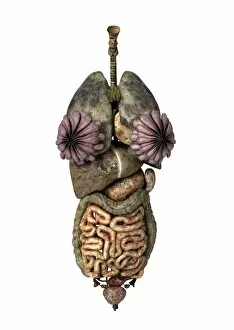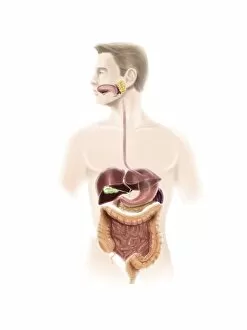Descending Colon Collection
The descending colon, a vital component of the human digestive system, plays a crucial role in the absorption of water and electrolytes
All Professionally Made to Order for Quick Shipping
The descending colon, a vital component of the human digestive system, plays a crucial role in the absorption of water and electrolytes. As part of the large intestine, it is responsible for processing waste materials before elimination. In this 3D rendering of healthy female internal organs, we can clearly observe the descending colon's position within the abdominal cavity. Its location is intricately connected to other internal organs such as the respiratory system. Understanding the anatomy of human abdominal vein systems helps us comprehend how blood flows through these intricate networks to nourish and support our bodily functions. The descending colon receives its blood supply from these veins, ensuring optimal functioning. A front view of the human digestive system provides an insightful perspective on how various components work together harmoniously. The descending colon stands out prominently in this medical illustration depicting different stages of colon cancer. This visual representation serves as a reminder to prioritize regular screenings and early detection for better outcomes. Examining general colon anatomy with labels allows us to identify specific parts like the ascending and transverse colons that connect seamlessly with their neighboring segments within our digestive tract. Cross-sections provide an invaluable glimpse into complex structures like our digestive system. Here we witness a cross-section revealing both external and internal views, highlighting key features including the descending colon's placement. Comparing healthy and unhealthy female organs emphasizes how critical maintaining proper organ function is for overall well-being. By focusing on preventative measures such as adopting a balanced diet rich in fiber while avoiding excessive red meat consumption or smoking, we can reduce risks associated with conditions affecting our large intestine. A sectional view showcasing only portions of our large intestine zooms in on essential details related specifically to digestion processes occurring within this segment—shedding light on its unique characteristics distinct from other sections along our gastrointestinal tract. Finally, exploring general colon anatomy further deepens our understanding by examining its structure comprehensively without distractions from surrounding organs or tissues—an opportunity to appreciate its complexity independently while appreciating its role in our overall health.

